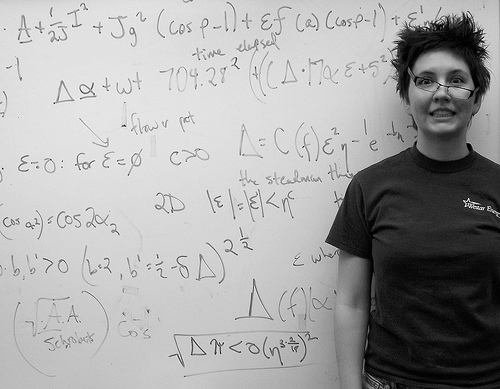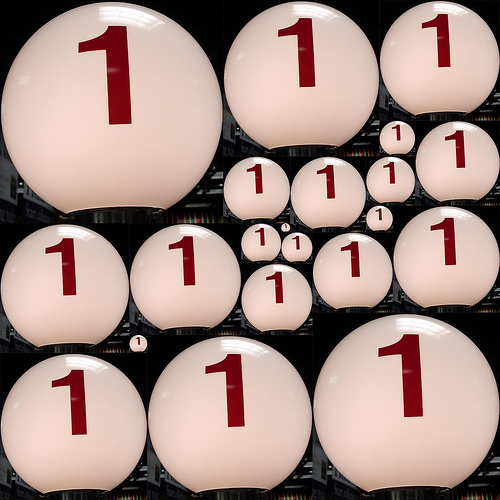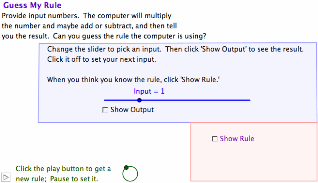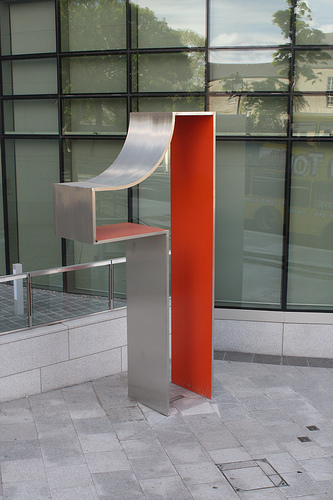Mathematics and Multimedia Blog Carnival #1
THE NUMBER 1
Welcome to the Mathematics and Multimedia Blog Carnival Number 1. Before beginning, let us see what’s so special about 1 as a number.
is a homophone of Juan (dela Cruz), the person who represents the Filipino people. He is just like Uncle Sam of the United States. Hmmm… just a thought, should we change Juan dela Cruz to Manny Pacquiao?
is the multiplicative identity. Any number multiplied by 1 is equal to that number.
is the only number that is not prime nor composite.
is the number in French playing cards intead of Ace. It is the international dialing code for the United States and Canada.
***
is equal to 1/21 + 1/22 + 1/23 + 1/24 + 1/25 + …
is equal to sin2 (a) + cos2 (a)
is equal to | Fn x Fn+3 – Fn+1 x Fn+2 | (F = Fibonacci numbers)
One is said to be a lonely number. If you are as lonely as the number one, maybe reading the blog submissions below will be of great help.
MATHEMATICS
Content
Andre Bluetauhas a very good explanation about the dilemma of the different meanings of part of a whole and about division in general in his article Division and its Discontent.
of the different meanings of part of a whole and about division in general in his article Division and its Discontent.
Pet Peeves has an excellent explanation about the epsilon-delta definition of limits of Bobobobo Weblog.
Steven Strogatzshares the beauty of algebra as he compares to detective work in his article Joy of x in the Opinionator section of the New York Times.
John D. Cook explains an interesting connection between geometry and probability in his article Cosines and Correlation in his blog The Endeavour.
 Sol Lederman presents some challenging puzzles from Archimedes to Rubik’s cube in his photo blog Pickover’s Pick in his blog Wild About Math!
Sol Lederman presents some challenging puzzles from Archimedes to Rubik’s cube in his photo blog Pickover’s Pick in his blog Wild About Math!
To those who want to be rich, lottery might be the answer, but before buying a lottery ticket, maybe you should read James Pollock’s article on Winning the Lottery.
Bill James proposes an Alternative Math Methods of multiplications by using lattices in his blog Discrete Ideas.
Pedagogy
Understanding is about making connection. This was Erlina Ronda‘s introductory statement as she explains the advantages of using mathematical investigation in the classroom in her article, Making connections Through Mathematical Investigation Part I and Part II. Ms. Ronda enriches her discussion by giving sample activities and GeoGebra applets in the said articles.
THE DAVIDS?
David Wees shares a brilliant idea in developing higher order thinking skills among students through problem posing. He let his students formulate problems and turn their math problems into math video problems. He has some examples of the video outputs in his blog.
among students through problem posing. He let his students formulate problems and turn their math problems into math video problems. He has some examples of the video outputs in his blog.
David Pilarski connects mathematics to art in his articleArt Meets Geometry – Two Point Perspective Drawing. Mr. Pi, as he would like to call himself, has lot of high school mathematics tutorial videos in his blog.
MULTIMEDIA
 John Golden gives us excellent teaching ideas on introducing variables using GeoGebra in his article GeoGebra: variable posted at MathHombre. Aside from the applets, you can also download several of his files.
John Golden gives us excellent teaching ideas on introducing variables using GeoGebra in his article GeoGebra: variable posted at MathHombre. Aside from the applets, you can also download several of his files.
Heather Sanders shares with us about the difficulties in distance learning, and gaining solutions from different 7 free web applications from the internet at CNA Class Online .
Mr Robbo has an excellent idea on how to run a 3d maths test in Google Sketchup.
Michelle R. Davis writes about the experiences of students in North Carolina on solving algebra problems using smart phones. If you’re new to technology, you may want to check out Richard Byrnes shares with us Twelve Essentials for Technology Integration.
For Ipad users, you may want to check Camille Hensleys 5 Excellent Ipad Apps for Technophiles, or keep sane while reading Ms. Laughton’s article on 5 Ipad application for science nuts.
Eric Weiss shares with us the Google tools that we can use in learning and teaching in his article 25 Little-known Google Tools for Scholars and Academics.
 Jason Dyer shares some excellent ideas to remedy the hassles of using the TI-Navigator in his article Three creative ways to use TI navigator in his blog The Number Warrior.
Jason Dyer shares some excellent ideas to remedy the hassles of using the TI-Navigator in his article Three creative ways to use TI navigator in his blog The Number Warrior.
Alexander Bogomolny tempts us in his his chocolate and mathematics post Technology and Red Herrings at CTK Insights. The task is to break rectangular chocolates along its “fault lines” with minimal number of “break up operations.”
Peter Rowlett shares his experiences (advantages and disadvantages) and his hopes about the future of podcasting in Unbroadcastable, and ode to podcasting in Travels in a Mathematical World.
Photo Credits
Nice One by sparetomato, Portrait of a Genius by A.A, The Loneliest Number by mag3737, Painted Cubes (original), One by walknboston, David Cook (Wikimedia, public domain), David Archuleta by Jyle Dupuis, The Chocolate Orgy Ended in Love by Darwin Bell.
Notes:
- This is just my first carnival so I am still groping a little bit. If you have submitted an article which was not included in this issue, kindly email me at mathandmultimedia@gmail.com, so that I can include it in the next issue.
- I have received “spammy” articles, but those which are related to the theme were given the benefit of the doubt and were posted.
- I am hosting this carnival for a couple of months to know the just to be comfortable with the basics, but eventually I am going to open it to other interested hosts.
- The second carnival issue will be posted on August 9, 2010. The deadline for submission is on August 6. If you want to submit articles to the carnival, click here.

